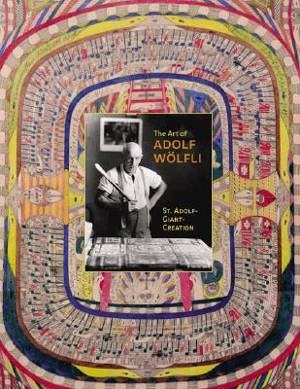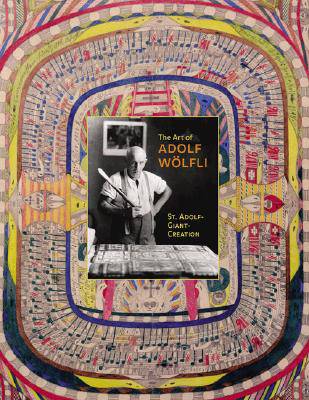
- Afhalen na 1 uur in een winkel met voorraad
- Gratis thuislevering in België vanaf € 30
- Ruim aanbod met 7 miljoen producten
- Afhalen na 1 uur in een winkel met voorraad
- Gratis thuislevering in België vanaf € 30
- Ruim aanbod met 7 miljoen producten
The Art of Adolf Wolfli
St. Adolf-Giant Creation
Elka Spoerri, Daniel Baumann, Edward M GomezOmschrijving
Despite being institutionalized for schizophrenia at age thirty-one, Adolf Wölfli (1864-1930) achieved artistic greatness in his cell at Waldau Mental Asylum near his native Bern, Switzerland. He has had a profound influence on modern art ever since; André Breton described his work as "one of the three or four most important oeuvres of the twentieth century." The Art of Adolf Wölfli offers a fresh vantage point on the artist's remarkably intricate drawings and astonishing collages, as well as his newly translated writings, which are justly celebrated for their dizzying blend of mythology and humor. Also included are illuminating essays by leading specialists on his art and life.
Wölfli's youth was one of deprivation. His alcoholic father ran off when Wölfli was five, and his mother died soon after. Despite these travails, he managed to complete his education, acquiring the sophisticated literacy so evident in his later work. However, beginning at age twenty-six, his repeated attempts to molest young girls landed him first in jail and, in 1894, in the asylum. Though violent at first, by 1899 he calmed down--and began to draw. Working primarily in pencil on newsprint, Wölfli created a dense, stunningly detailed medley of wildly imaginative prose texts interwoven with poems, musical compositions, color illustrations, and collages. His five-part magnum opus, "St. Adolf-Giant-Creation," comprises 45 large volumes and 16 notebooks--25,000 pages in all--containing 1,620 drawings and 1,640 collages. Sure to be the authoritative resource for this remarkable oeuvre, this striking book represents compelling testimony that great torment does not preclude great art.EXHIBITION SCHEDULE
? American Folk Art Museum, New York
February 25 - May 18, 2003 ? Milwaukee Art Museum
September 18 - December 12, 2004 ?
Specificaties
Betrokkenen
- Auteur(s):
- Uitgeverij:
Inhoud
- Aantal bladzijden:
- 112
- Taal:
- Engels
Eigenschappen
- Productcode (EAN):
- 9780691114989
- Verschijningsdatum:
- 26/01/2003
- Uitvoering:
- Hardcover
- Formaat:
- Genaaid
- Afmetingen:
- 249 mm x 312 mm
- Gewicht:
- 1020 g

Alleen bij Standaard Boekhandel
Beoordelingen
We publiceren alleen reviews die voldoen aan de voorwaarden voor reviews. Bekijk onze voorwaarden voor reviews.











